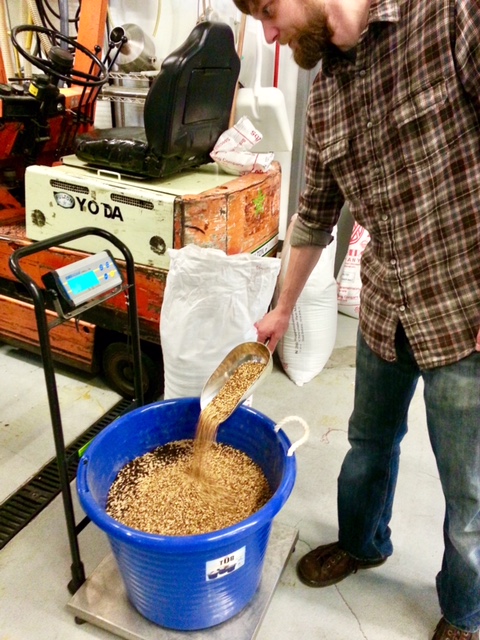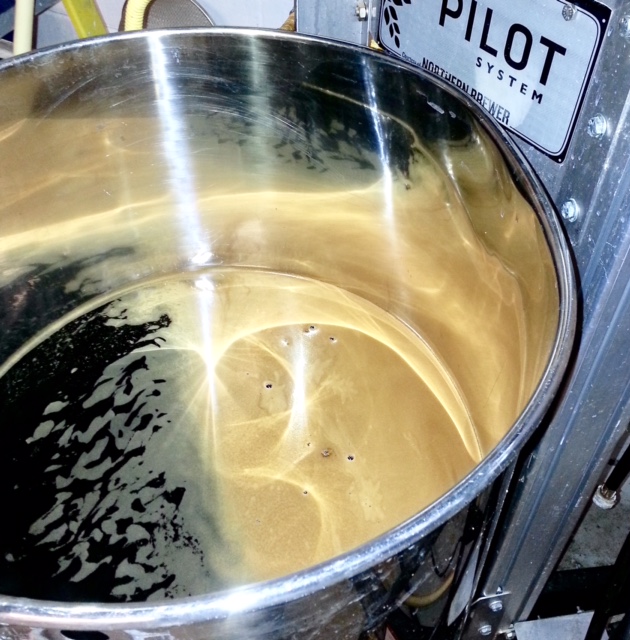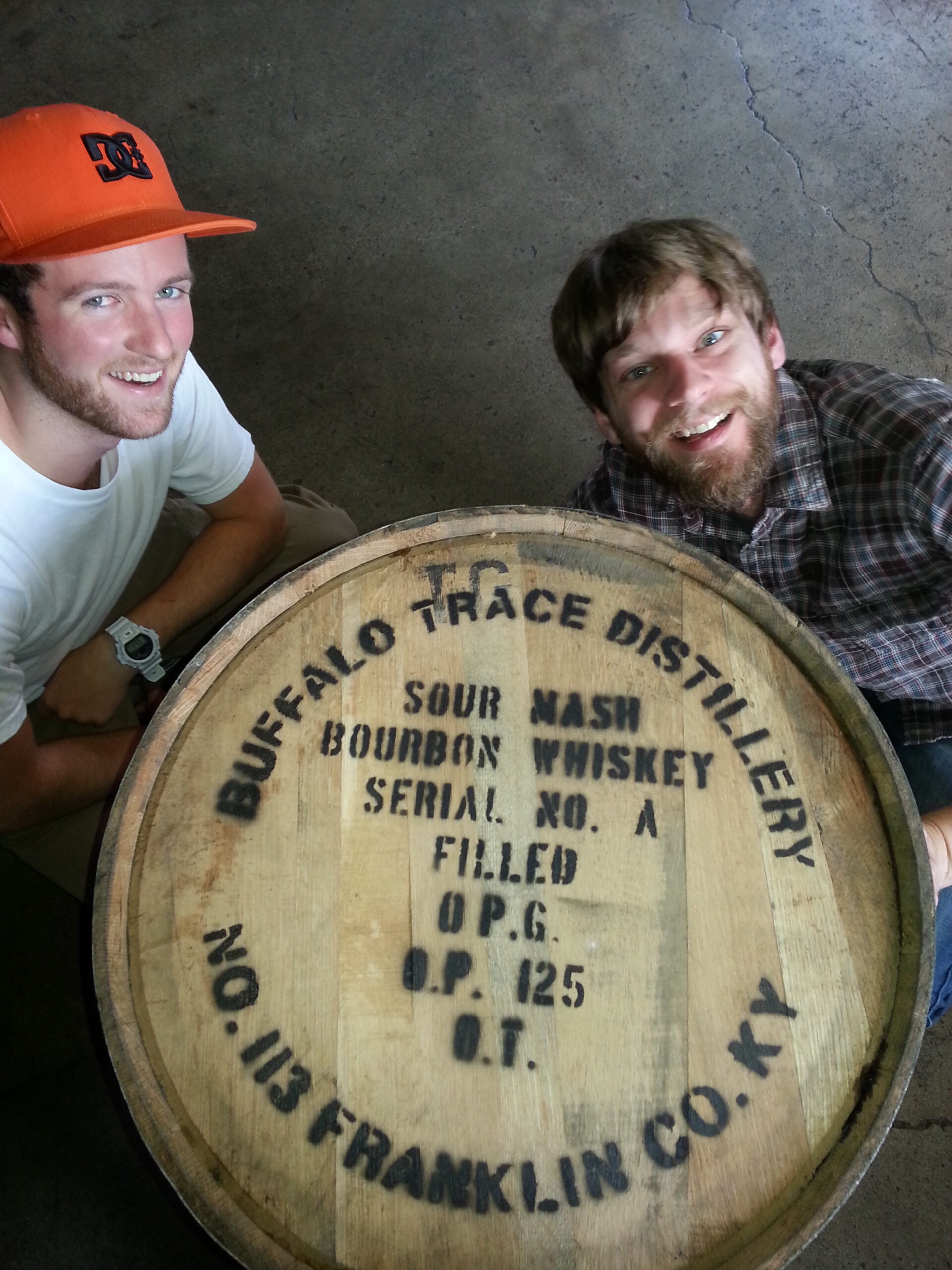You’ve likely premeditated the bird preparation, complementary sides, and family logistics, but have you brainstormed your beer selections? … The time is now!
Continue readingBeer + Candy!
Halloween is less than a week away, and as you are all putting the finishing touches on your costumes, here at the shop we’re brainstorming ways to make Halloween as fun for grown-ups as it is for kids.
Continue readingFrom Bine to Brewer
While the fresh, “green” character in wet and fresh hop brews are delicious, it is the deeper symbolism – a connection from grower to glass – that brings the most excitement to the beer community.
Continue readingBurning Through The Dictionary
As craft beer continues its unprecedented growth from hobby industry to big business, brewers are rapidly running out of language, and consequently, an ability to differentiate themselves.
Continue readingAug-toberfest?
Here I am, making one last effort to convince you that it’s not yet fall.
Continue readingBeer Cocktails, Part 1: The Michelada
Akin to the bloody mary, the michelada is a darling of brunch menus everywhere, widely considered to be a proper hangover remedy.
Continue readingFrance 44 Brews: 3711 Rue Bourbon
Nearly four years ago, in September 2013, the France 44 Beer Crew had a brewing opportunity at Fulton Beer in downtown Minneapolis. Jake’s friendly neighbor, Fulton brewer Matt Moon, graciously invited the team over for a Sunday brew session on their nifty Northern Brewer 15-barrel pilot brewhouse. With much guidance and planning from Matt, we settled on brewing an Imperial Stout fermented with French Saison yeast, and then aging it in our France 44 Buffalo Trace Single Barrel. To those of you who think that brewing is all glamour and fame, think again. We learned first-hand the effort that goes into every pint you gulp. These guys put in long, hard days!

Arriving just as the sun crested above the horizon, Matt threw on the tunes and quickly put us to work. Kegs were cleansed and rinsed. A variety of malts were selected for our grain bill, this had to be a BIG beer! What surprised me most through this process was how little dark and black malt is necessary to make a beer that pours black as night. Using a hand-drill powered mill, we learned the precision it takes to get a proper crush. Too little and you won’t release enough fermentable sugars, too much and you risk not being able to filter your wort properly. It was going to take three batches on the brewhouse to fill that barrel, so we had to get moving.

Taking turns lifting buckets of milled grain up the ladder to mash-in, we then learned the correct mash paddle technique. From there on it was a frenzy: mash, lauter, boil, chill, whirlpool, transfer, repeat. Though our beautiful wort had yet to begin fermentation, I think we were all feeling a sense of accomplishment. The brewing process and all its variables were quite intriguing! Before we knew it, the day had passed and the sun was making its way across the western vista. Bill and I left the brewery smiling ear to ear, what a day it was! Props are due to former F44 beer guy Jake Wolf (say hello to him next time you’re at Steel Toe Brewing) as he outlasted us and made it to the very end of brew day. Now we had to wait…
Only the most undiluted, sugar-filled wort could be used to create a beer with the strength we desired, so we used just the uber-concentrated first runnings. This sugar-rich liquid was introduced to Wyeast’s 3711 French Saison yeast strain, the namesake for our brew. This versatile strain fermented vigorously, making the beer strong and dry, with a silky body. After fermenting out, the brew went to rest in our France 44 Buffalo Trace Bourbon Single Barrel for half a year. Just a handful of kegs resulted. Quite a bit of work for so little beer! Luckily for you, we will be pouring the final keg this Friday, July 7th from 4-6:30pm at the beer tasting bar. Stop in to have a chat with Fulton Ben, try our beer and all of Fulton’s stellar line-up. We hope to see you there!

7 Fruit Beers You Should Be Drinking This Summer
So many breweries have been releasing fruit-infused beers lately that the France 44 beer cooler is starting to take on the feel of a smoothie shop. Close your eyes, point in any direction and chances are you’ll be looking right at one. A perfect companion for the steamy summer days ahead, these juicy brews deserve a spot in your fridge. Here are our favorites for the months ahead:
- Oskar Blues Fugli IPA – $9.49/6pk
- Lupulin Apricot Blonde Ale – $10.99/4pk(16oz)
- Indeed Peach Bum IPA – $10.99/6pk
- Schell’s Tidal Disruption Blackberry Berliner Weisse – $17.99/750ml
- 21st Amendment Blood Orange Brew Free or Die IPA – $8.99/6pk
- Stiegl Radler (Grapefruit or Lemon) – $8.99/4pk(16oz)
- Stillwater Insetto Dry-Hopped Plum Sour – $8.99/4pk
Lawnmower Beers
A hard day’s work of lawncare and gardening must be rewarded with a refreshing beverage – beer! There are just a few ground rules to follow…
Continue readingCloudy with a Strong Chance of Hops
Do you drink beer? If so, you have probably noticed the opaque, juice-like beer flowing from draft lines across the country. These aromatic, pulpy, hop-bomb IPAs are currently the hottest trend in beer, elevating some small brewers to near superstar status. But this popularity has its roots in a style that’s been brewed in New England for nearly fifteen years now. John Kimmich, owner of The Alchemist brewery in Vermont, has been brewing the famous Heady Topper IPA since 2004 – a stalwart on BeerAdvocate’s Top 10 list since 2011. Kimmich doesn’t filter or pasteurize his celebrated product. Heady packs fruit-bowl sensations and silky, seamless bitterness into an unassuming silver can.
Kimmich and other noteworthy New England brewers are viewing IPAs through a different lens. Throughout much of the 2000s the belief was that bitter is better. Brewers, chiefly from the west coast, were punishing palates by elevating IBUs (International Bitterness Units) to extraordinary levels. Beer connoisseurs were deemed worthy by summiting Mt. Bitterness at an elevation of 100+ IBUs. But this youthful league of east coasters have turned their back on bitterness, favoring intensely aromatic and flavorful hop character. A Boston Celtics – Los Angeles Lakers like rivalry has ensued.
It all comes down to how and when the hops are utilized. Hop flowers have compounds called alpha acids that are isomerized when added to boiling wort (the precursor to beer). This isomerization is what creates bitterness. Adding hops early extracts more bitterness, but less character. Late addition hops are retain more volatile aromatic and flavorful compounds in the beer, but contribute less bitterness. New England brewers have been crafting their IPAs by favoring the latter. Little attention is given to IBU levels, the goal being bright hop aromas, a full, juice-like mouthfeel, and low bitterness.
Where does the haze come from? It’s actually a byproduct of the methods used to create this flavor profile. East coast IPAs receive little bittering hop additions, with lots of late addition hops and aggressive dry-hopping. This regimen can be carried out to such a degree that the beer is inflicted with a permanent “hop haze,” caused by microscopic vegetable matter. Certain yeast strains will also encourage turbidity and produce fruity esters. The last step is minimizing or omitting filtration. Fining and filtering is important for shelf life and stability, but it can also strip particulates and proteins from beer that enhance mouthfeel and flavor. New England style IPAs are best consumed fresh, and if you can find one on shelves it probably hasn’t been there long anyway.
Once just a modestly popular regional specialty, New England IPAs are a sensation that is here to stay. Brewers from the Midwest and West coast have even hopped on the bandwagon, putting their own spins on the style. Though there are just a handful available in the Midwest at the moment, don’t expect it to stay that way. Here are some of our France 44 favorites:
Sixpoint Puff Cloudy Double IPA – $11.99/4pk
Modist Dream Yard IPA – $13.49/4pk
Lupulin Blissful Ignorance Double IPA – $11.99/4pk (this ultra-popular beer is hard to keep in stock–check with us next week!)
Insight East vs. West IPA – $12.49/4pk
Ballast Point Unfiltered Sculpin IPA – $14.99/6pk
